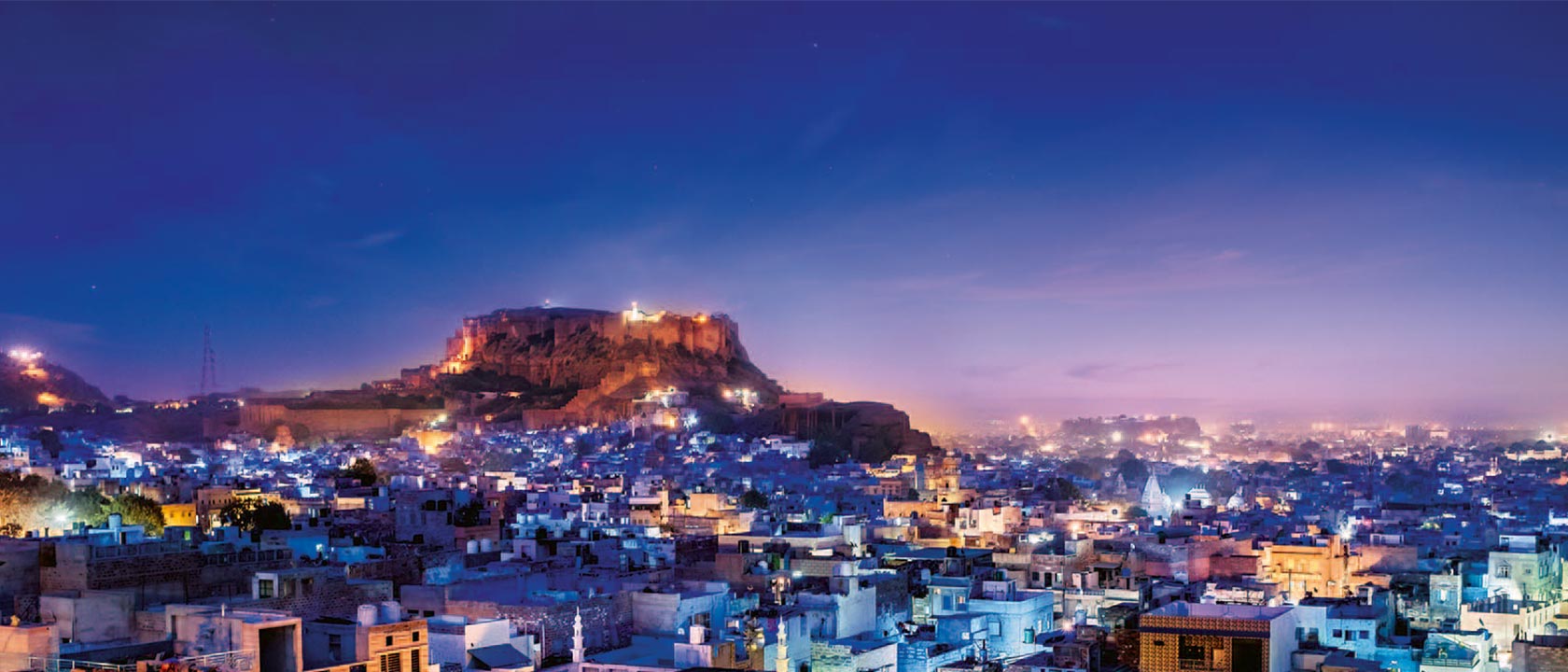 TravelINDIA.COM
TravelINDIA.COM
Jodhpur
The blue city
A delightful blend of the
modern & the
traditional
home page
Jodhpur, the second largest city in Rajasthan is popularly known as the Blue City. The name is clearly befitting as
most of the architecture – forts, palaces, temples, havelis and even houses are built in vivid shades of blue. The
strapping forts that tower this magnificent city sum up to a spectacle you would not want to miss. The mammoth,
imposing fortress of Mehrangarh has a landscape dominating a rocky ridge with the eight gates leading out of the
fortress. The new city is located outside the structure. Jodhpur is also known for the rare breed of horses known as
Marwari or Malani, which are only found here.
Jodhpur marks its origin back to the year of 1459 AD. The history of this prosperous city revolves around the Rathore
clan. Rao Jodha, the chief of Rathore Clan is credited with the origin of Jodhpur in India. The city is known to be
built in place of the ancient capital, Mandore of the state of Manwar. Hence, the people of Jodhpur and surrounding
areas are commonly known as Marwaris. Also, it is believed that the relics of Mandore can still be witnessed in the
Mandore Gardens.
History
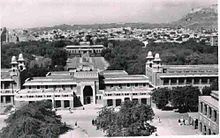
According to the Rajasthan District Gazetteers of Jodhpur and the Hindu epic Mahabharat (composed up to the 4th century AD), Ahirs were the inhabitants of Marwar and later on the Rathore clan established the Marwar Kingdom. There may have been small settlements before Rathore rule.[6][7]
The Jodhpur city was founded in 1459 by Rao Jodha, a Rajput chief of the Rathore clan. Jodha succeeded in conquering the surrounding territory and thus founded a state which came to be known as Marwar. As Jodha hailed from the nearby town of Mandore, that town initially served as the capital of this state; however, Jodhpur soon took over that role, even during the lifetime of Jodha. The city was located on the strategic road linking Delhi to Gujarat. This enabled it to profit from a flourishing trade in opium, copper, silk, sandalwood, date palm and other tradable goods.
After the death of Rao Chandrasen Rathore the state became a fief under the Mughal Empire, owing fealty to them while enjoying internal autonomy. During this period, the state furnished the Mughals with several notable generals such as Maharaja Jaswant Singh. Jodhpur and its people benefited from this exposure to the wider world as new styles of art and architecture made their appearance and opportunities opened up for local tradesmen to make their mark across northern India.
 Aurangzeb briefly sequestrated the state (c.1679) after the death of Maharaja Jaswant Singh, but the prior ruler Maharaja Ajit Singh was restored to the throne by Veer Durgadas Rathore after Aurangzeb died in 1707 and a great struggle of 30 years. The Mughal empire declined gradually after 1707, but the Jodhpur court was beset by intrigue; rather than benefiting from circumstances, Marwar descended into strife and invited the intervention of the Marathas, who soon supplanted the Mughals as overlords of the region. This did not make for stability or peace, however- 50 years of wars and treaties dissipated the
wealth of the state, which sought the help of the British and entered into a subsidiary alliance with them in 1818.
Aurangzeb briefly sequestrated the state (c.1679) after the death of Maharaja Jaswant Singh, but the prior ruler Maharaja Ajit Singh was restored to the throne by Veer Durgadas Rathore after Aurangzeb died in 1707 and a great struggle of 30 years. The Mughal empire declined gradually after 1707, but the Jodhpur court was beset by intrigue; rather than benefiting from circumstances, Marwar descended into strife and invited the intervention of the Marathas, who soon supplanted the Mughals as overlords of the region. This did not make for stability or peace, however- 50 years of wars and treaties dissipated the
wealth of the state, which sought the help of the British and entered into a subsidiary alliance with them in 1818.
Culture
The city is famous for its food and its popularity can be judged from the fact that one can find sweet shops named 'Jodhpur Sweets' in many cities throughout
India. Being at the onshore of Thar desert, life has been influenced by ways of select nomadic tribes (So-called "Gypsy" groups - Banjare in Hindi - have settled in
some parts of the city).
The historic buildings and landscapes of the city were featured in a number of movies, including The Dark Knight Rises directed by Christopher Nolan, Baadshaho starring Ajay Devgn and Emraan Hashmi, The Darjeeling Limited starring Owen Wilson, Adrien Brody, and Jason Schwartzman, The Fall directed by Tarsem Singh, "Hum Saath-Saath Hain" directed by Sooraj Barjatya, "Veer" directed by Anil Sharma, "Shuddh Desi Romance" directed by Maneesh Sharma and "I" directed by S. Shankar, "Kung Fu Yoga" starring Jackie chan, Sonu Sood, Disha Patani, "Loafer" starring Varun Tej and Disha Patani; Supreme (film)
starring Sai Dharam Tej and Rashi Khanna; Airlift feat.in Akshay Kumar and Nimrat Kaur. 2017 is a year when there are many shooting of films in Jodhpur happened

Sports
Jodhpur has two outdoor stadiums and one indoor stadium complex. Barkatullah Khan Stadium has hosted
two cricket ODIs. Umaid stadium footboll stadium and Gaushala maidan sports stadium. and railway cricket ground
Climate
The climate of Jodhpur is hot and semi-arid during its nearly yearlong dry season, but contains a brief rainy season from late June to September (Köppen BShw).
Although the average rainfall is around 450 millimetres (18 in), it fluctuates greatly. In the famine year of 1899, Jodhpur received only 24 millimetres (0.94 in),
but in the flood year of 1917 it received as much as 1,178 millimetres (46.4 in).
Temperatures are extreme from March to October, except when the monsoonal rain produces thick clouds to lower it slightly. In the months of April, May and June, high
temperatures routinely exceed 40 degrees Celsius. During the monsoon season, average temperatures decrease slightly. However, the city's generally low humidity rises,
which adds to the perception of the heat. The highest temperature recorded in Jodhpur was on 18 May 2016 when it rose up to 53.2 degrees Celsius.

TOURISM IN JODHPUR
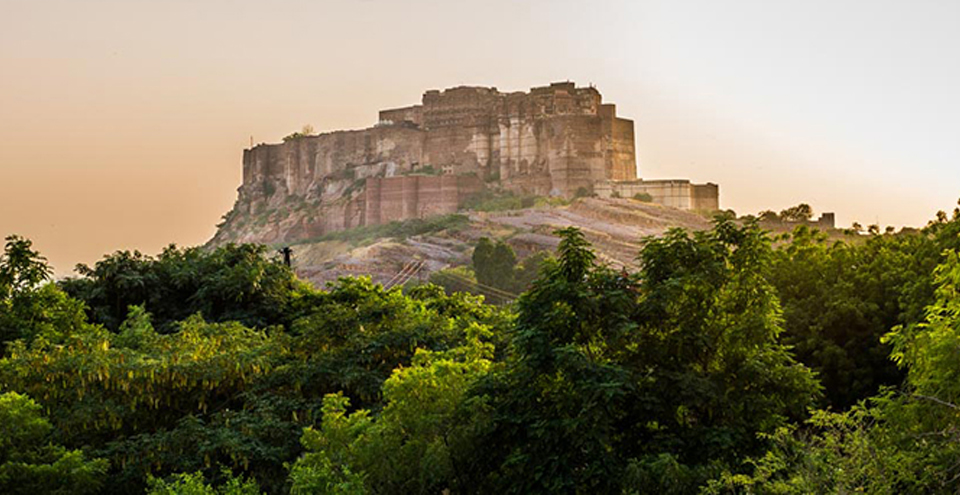
MEHRANGARH FORT
Rising perpendicular and impregnable from a hill which is 125 metres above Jodhpur’s skyline is the Mehrangarh Fort.
This historic fort is one of the most famous in India and is packed with history and legends. Mehrangarh Fort still
bears the imprints of cannonball attacks courtesy the armies of Jaipur on its second gate. Chiselled and sturdy, the
fort is known for its exquisite latticed windows, carved panels, intricately decorated windows and walls of Moti Mahal,
Phool Mahal and Sheesh Mahal.
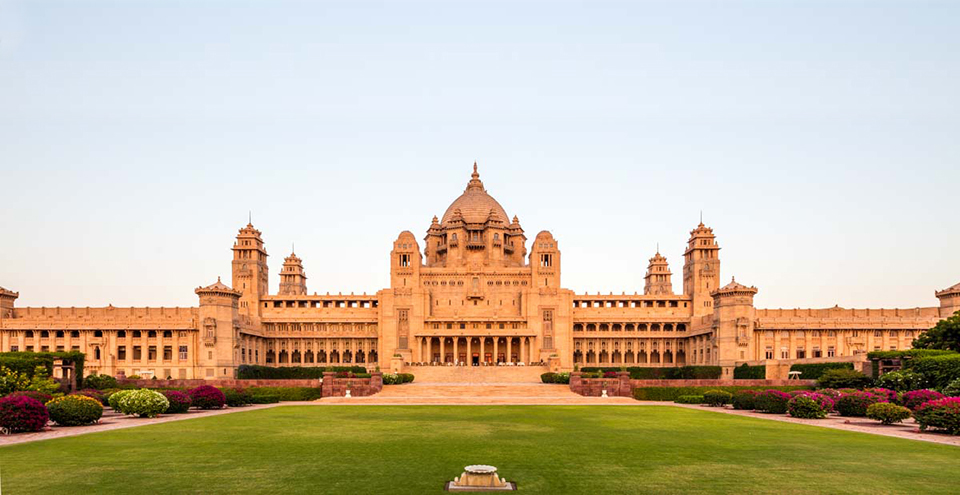
UMAID BHAWAN PALACE
Umaid Bhawan Palace was built by Maharaja Umaid Singh in 1929 to counter a famine which had hit the state at the time.
It was also known as the Chittar Palace while being constructed thanks to the use of stones drawn from the Chittar
hill. The palace was designed by HV Lanchester, a renowned British architect, and was completed in 16 years. Built
with sandstone and marble, the architecture of the palace is described as a blend of lndo-Saracenic, Classical Revival
and Western Art Deco styles. It is recognised as one of the largest private homes in the world and also one of the more
spectacular buildings. It is the only palace built in the 20th century.
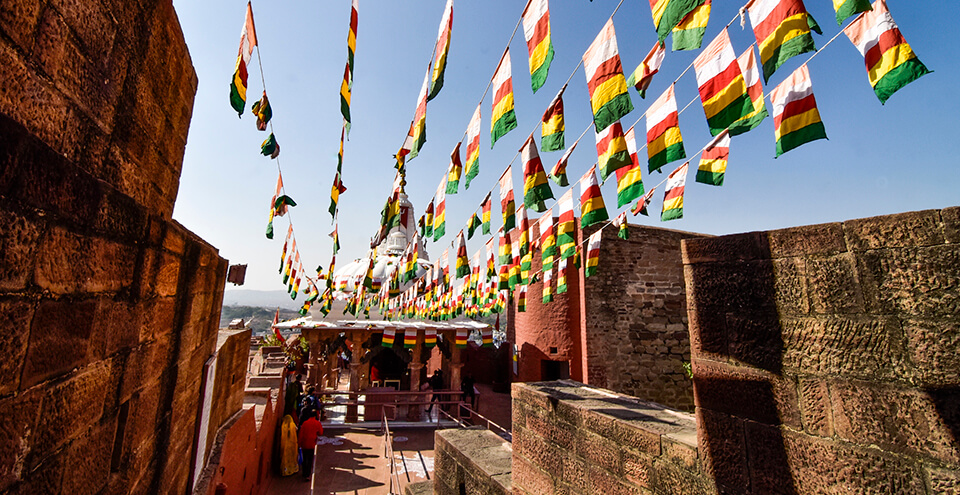
CHAMUNDA MATAJI TEMPLE
Chamunda Mataji was Rao Jodha’s favourite goddess and so her idol was bought to the Mehrangarh Fort.
Thus, the fort became a place of worship and was turned into a temple. Since then, locals have followed the culture of
worshipping Chamunda Mata. In fact, till date, the goddess remains the Isht Devi (the adopted goddess) of Maharajas
and the royal family.
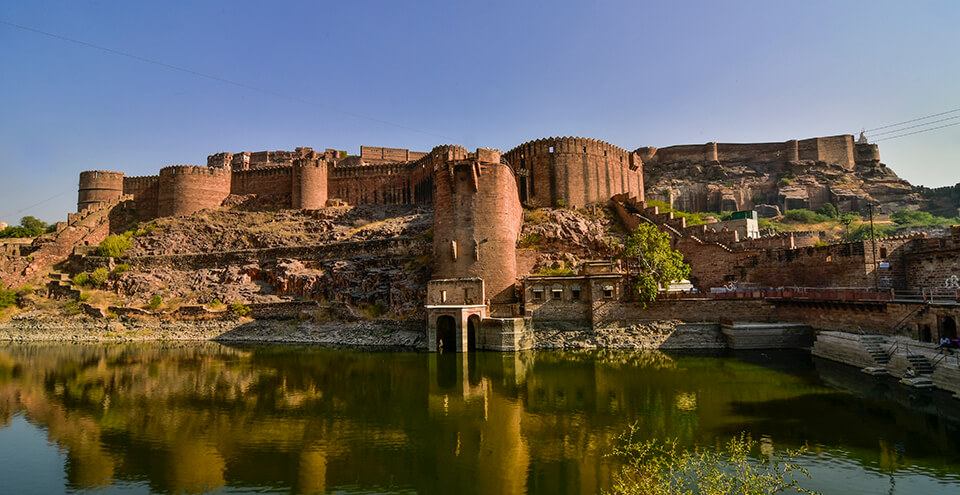
RANISAR PADAMSAR
Located near the Fateh Pole in Mehrangarh, the Ranisar and Padmasar are adjacent lakes that were
constructed in the year 1459. Ranisar Lake was built on orders of Queen Jasmade Hadi, Rao Jodha's wife while
Padmasar Lake was ordered by Queen Padmini of Rao Ganga, daughter of Rana Sanga of Mewar.
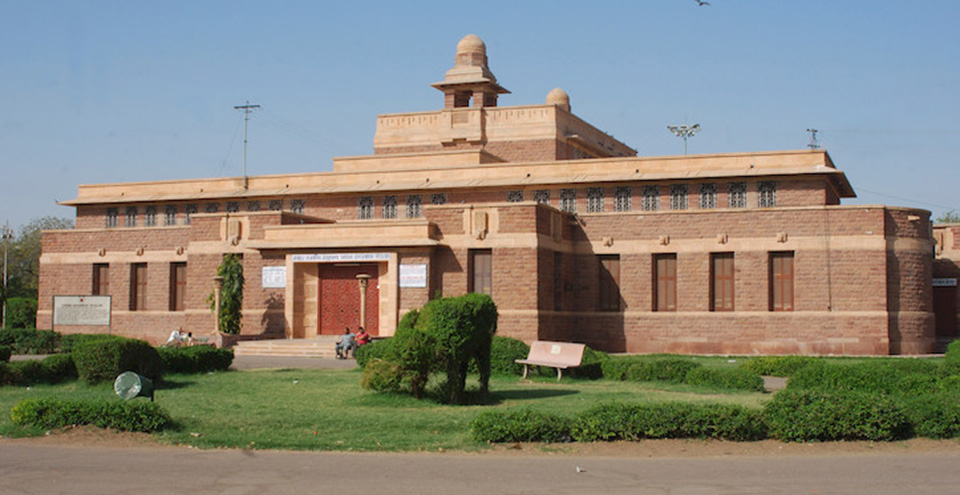
JODHPUR GOVERNMENT MUSEUM
The government museum, located in Umaid Garden, houses a rich collection of relics including armoury,
textiles, local art and crafts, miniature paintings, portraits of rulers, manuscripts and images of the Jain Tirthankaras.
Wildlife lovers can also visit the zoo, which is located close by.
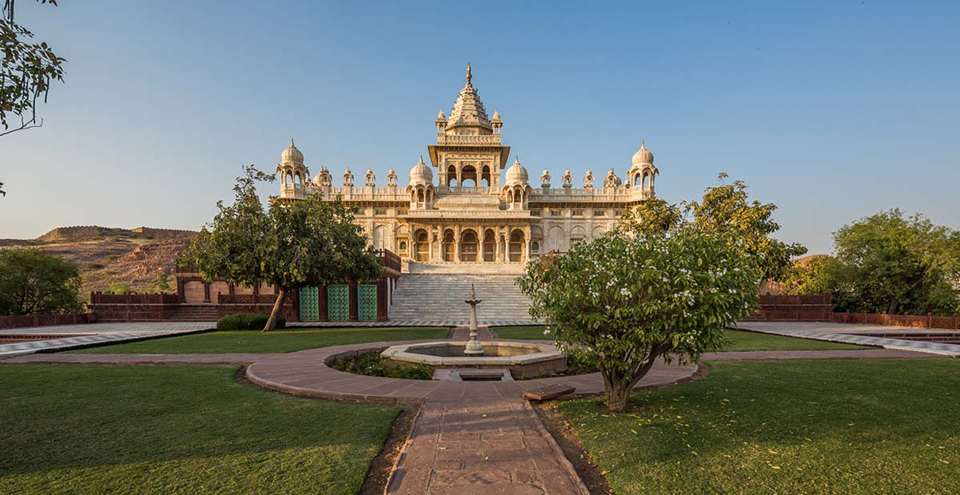
JASWANT THADA
This milky white memorial built towards the end of the 19th century as a tribute to the leader
Jaswant Singh is a huge tourist attraction. Jaswant Singh, who ruled Jodhpur, invested well in his state. He made
attempts to bring down the level of crime, subdue dacoits, built railways and broadly worked on raising the economy of
Marwar.
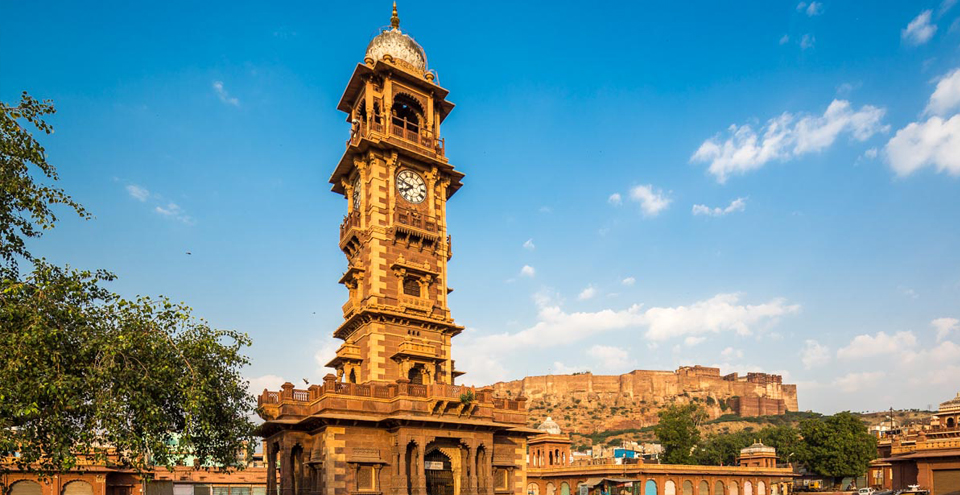
GHANTA GHAR
Ghanta Ghar, also known as the clock tower of Rajasthan, is situated in one of the busiest areas of
Jodhpur, the Sadar Bazaar. It was constructed by Shri Sardar Singh Ji of Jodhpur. The Sadar Market is quite popular
among tourists, who throng the streets to purchase Rajasthani textiles, clay figurines, miniature camels and elephants,
marble inlay work and classic silver jewellery.
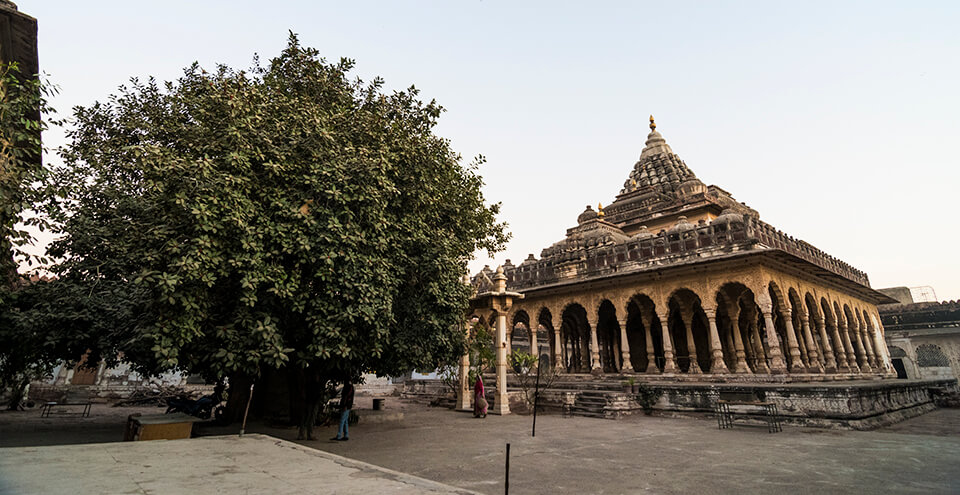
MAHAMANDIR TEMPLE
Mahamandir, meaning great temple, is a sanctified spot where tranquillity reigns supreme. Situated
on Mandore road, the temple is an architectural wonder. It is supported by 84 pillars and ornamented with detailed
designs and figures depicting various postures of Yoga.

MASURIA HILLS
Masuria garden is one of the three most beautiful and famous gardens of Rajasthan. Located on top
of the Masuria hill in the middle of Jodhpur, it is popular among devotees because of the centuries-old temple
dedicated to a local deity, Baba Ramdev. There is a restaurant located here which offers a stunning panoramic view of
the city.
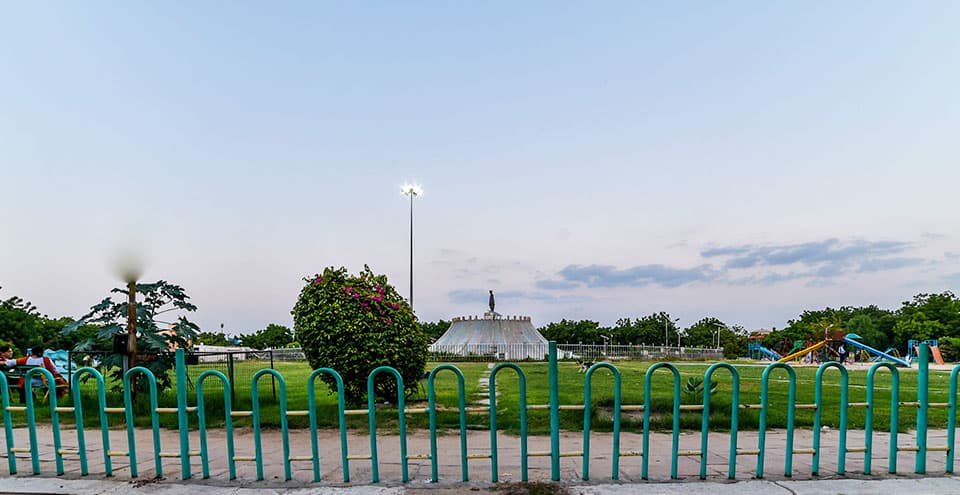
SHASTRI CIRCLE
Shastri Circle is a traffic roundabout in the middle of Jodhpur City. While it has a job to do
during the day, it is most spectacular at night, when it comes to life with lights and fountains. This draws locals as
well as tourists to the spot.
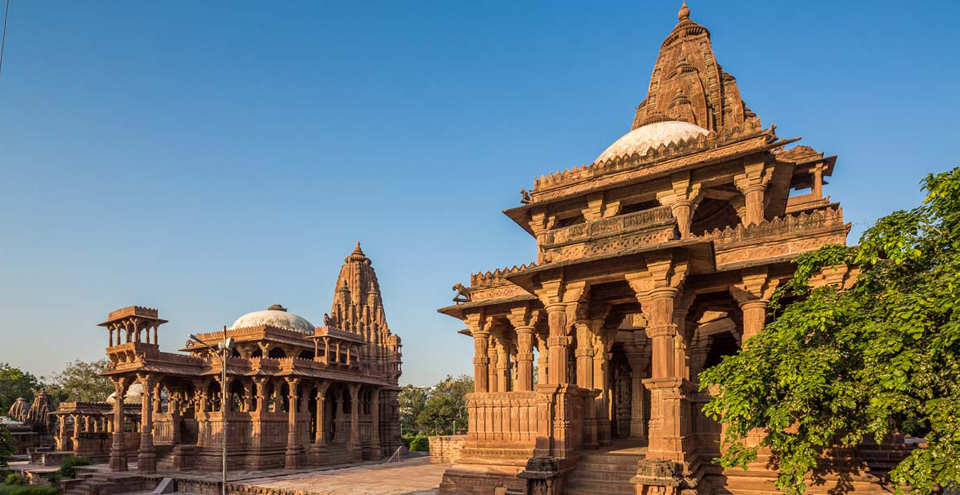
MANDORE
Towards the north of Jodhpur is the ancient capital of Marwar, Mandore. This area is of major
historical importance and you will find the dewals or cenotaphs of Jodhpur’s former rulers. Unlike the original
chhatri-shaped cenotaphs that are typical patterns of Rajasthan architecture, these are built along the lines of Hindu
temples.
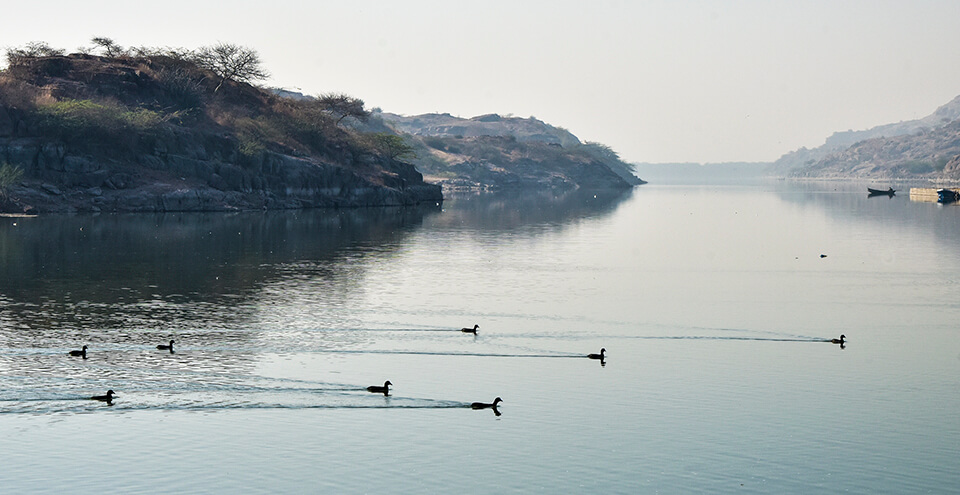
KAILANA LAKE
Situated on Jaisalmer road, this small artificial lake is an ideal picnic spot. It is like a canvas
with a splash of romantic colours. The beauty of the lake stays with you long after you’ve experienced it. For those
who’d like to go out on to the lake, boating facilities are also available through R.T.D.C.
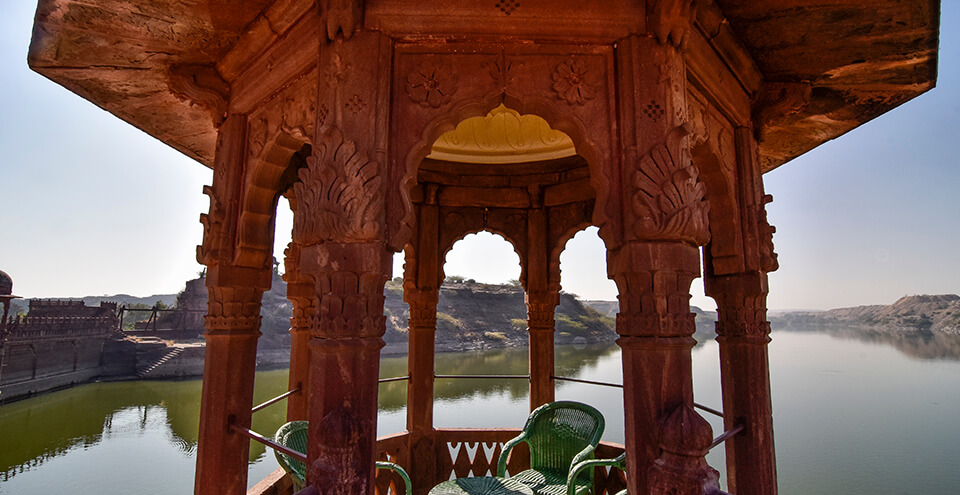
BALSAMAND LAKE
Balsamand Lake is about 5 kilometres from Jodhpur on the Jodhpur-Mandore Road. Built in 1159 AD, it
was planned as a water reservoir to cater to Mandore. The Balsamand Lake Palace was built on its shore later as a
summer palace. It is surrounded by lush green gardens that house groves of trees such as mango, papaya, pomegranate,
guava and plum. Animals and birds like the jackal and peacock also call this place home. This lake is now a popular
picnic spot with tourists and locals.
Transportation

Rail
Jodhpur railway station is the divisional headquarters of the North Western Railways (NWR). It is well connected with railways to major Indian cities like Alwar,
Delhi, Mumbai, Kolkata, Chennai, Bangalore, Trivandrum, Pune, Kota, Kanpur, Bareilly, Hyderabad, Ahmedabad, Indore, Bhopal, Dhanbad, Patna, Guwahati, Nagpur, Lucknow,
Gwalior, Jaipur etc. To decongest the main Jodhpur station (JU), the suburban station Bhagat ki Kothi (BGKT) is being developed as the second main station for passenger
trains. At present 106 trains serves to both the stations. Some of the important trains originating from Jodhpur railway station are- Ranthambore Express (Jodhpur to
Indore), Mandore Express (Jodhpur to Delhi), Suryanagri Express (Jodhpur to Mumbai), Marudhar Express (Jodhpur to Lucknow), Howrah Superfast (From Jodhpur to Howrah) etc.
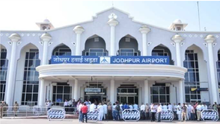
Airport
Jodhpur Airport is one of the prominent airports of Rajasthan. It is primarily a military airbase with a civil enclosure to allow for civilian air traffic. Due to
Jodhpur's strategic location, this airport is regarded as one of the most important ones for the Indian Air Force.
At present, there are daily flights from Delhi, Mumbai, Udaipur, Jaipur, Bangalore, Surat and Goa to the city operated by Air India and Jet Airways and Spicejet. T
he bill and basic formalities for the long-awaited expansion of the airport were cleared by all the concerned authorities in June 2016, clearing the way for the
expansion of the airport in two phases beginning Feb 2016. Post the expansion, it is expected that there will be morning and evening flights
from the city to more cities than presently available in addition to more airlines coming to and fro the city.

Road
Jodhpur is connected by road to all major cities in Rajasthan and neighboring states like Delhi, Ahmedabad, Surat, Ujjain, Agra etc. Apart from deluxe and express
bus services to cities within the state, Rajasthan Roadways provides Volvo & Mercedes Benz bus service to Delhi, Ahmedabad, Jaipur, Udaipur and Jaisalmer . Recently,
Bus Rapid Transit System (BRTS) is launched in the city with low floor and semi low floor buses plying on major routes. Jodhpur is connected to the National Highway
network with three National Highways
and to the Rajasthan State Highway network with ten state highways. National Highways passing through Jodhpur:
Food
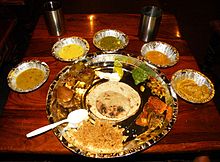
A number of dishes from Indian cuisine originated in Jodhpur, such as Makhaniya Lassi, Mawa Ki Kachori, Pyaaj Ki Kachori (kachori of onion), Hot & Spicy Mirchi Bada, Dal Bati Churma, Lasan Ki Chutney (special gravy of garlic), Mirchi Ka Kutii, Gatte Ki Sabzi, Ker Sangri Sabzi, Raab, Lapsi, Aate Ka Halwa, Kachara Mircha Sabzi and Kadhi Pakoda with Baajre Ka Sogra. Jodhpur is known for its sweets ranging from traditional "Makhanbada", "Mawa Ki Kachori", "Malpua", "Ghevar", "Motichur Ke Laddu", "Besan barfi", "Thorr" and "Gulab Jamun" to Bengali
"Rasgulla" and "Ras Malai". There are other variety of items cooked in traditional ways prepared in Jodhpur.
 Aurangzeb briefly sequestrated the state (c.1679) after the death of Maharaja Jaswant Singh, but the prior ruler Maharaja Ajit Singh was restored to the throne by Veer Durgadas Rathore after Aurangzeb died in 1707 and a great struggle of 30 years. The Mughal empire declined gradually after 1707, but the Jodhpur court was beset by intrigue; rather than benefiting from circumstances, Marwar descended into strife and invited the intervention of the Marathas, who soon supplanted the Mughals as overlords of the region. This did not make for stability or peace, however- 50 years of wars and treaties dissipated the
wealth of the state, which sought the help of the British and entered into a subsidiary alliance with them in 1818.
Aurangzeb briefly sequestrated the state (c.1679) after the death of Maharaja Jaswant Singh, but the prior ruler Maharaja Ajit Singh was restored to the throne by Veer Durgadas Rathore after Aurangzeb died in 1707 and a great struggle of 30 years. The Mughal empire declined gradually after 1707, but the Jodhpur court was beset by intrigue; rather than benefiting from circumstances, Marwar descended into strife and invited the intervention of the Marathas, who soon supplanted the Mughals as overlords of the region. This did not make for stability or peace, however- 50 years of wars and treaties dissipated the
wealth of the state, which sought the help of the British and entered into a subsidiary alliance with them in 1818.



















